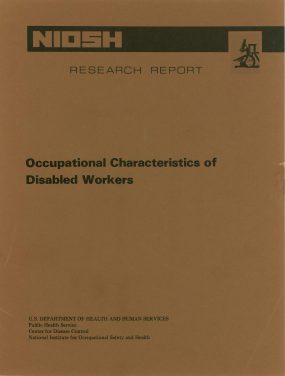Occupational Characteristics of Disabled Workers
July 1980
DHHS (NIOSH) Publication Number 80-145

Occupational characteristics of disabled workers were analyzed based on Social Security disability benefit awards during 1969 to 1972. Race and sex specific and age adjusted proportional morbidity ratios were determined based on disabling condition and occupation, and numbers of disabled workers were estimated by disabling condition occupation, age, sex and race to furnish a reference for epidemiological investigations of occupational morbidity. The Continuous Disability History Sample file was used as a data source. The authors note that during 1969 to 1972 period, 73 percent of the estimated 1.5 million disabled workers awarded Social Security disability benefits were men. Eighty five percent of the beneficiaries were white, 14 percent were black, and about 1 percent were of other races. Circulatory and musculoskeletal system disabilities comprised 31.5 and 15.4 percent of the total, respectively. Mental disorders ranked third in all subgroups, except White women, for whom neoplasms ranked slightly ahead of mental disorders. Service occupations; structural work; clerical and sales; professional, technical, and managerial; and machine trade occupations comprised 15.9, 13.3, 13.2, 10.6, and 9.0 percent of the disability groups, respectively.
